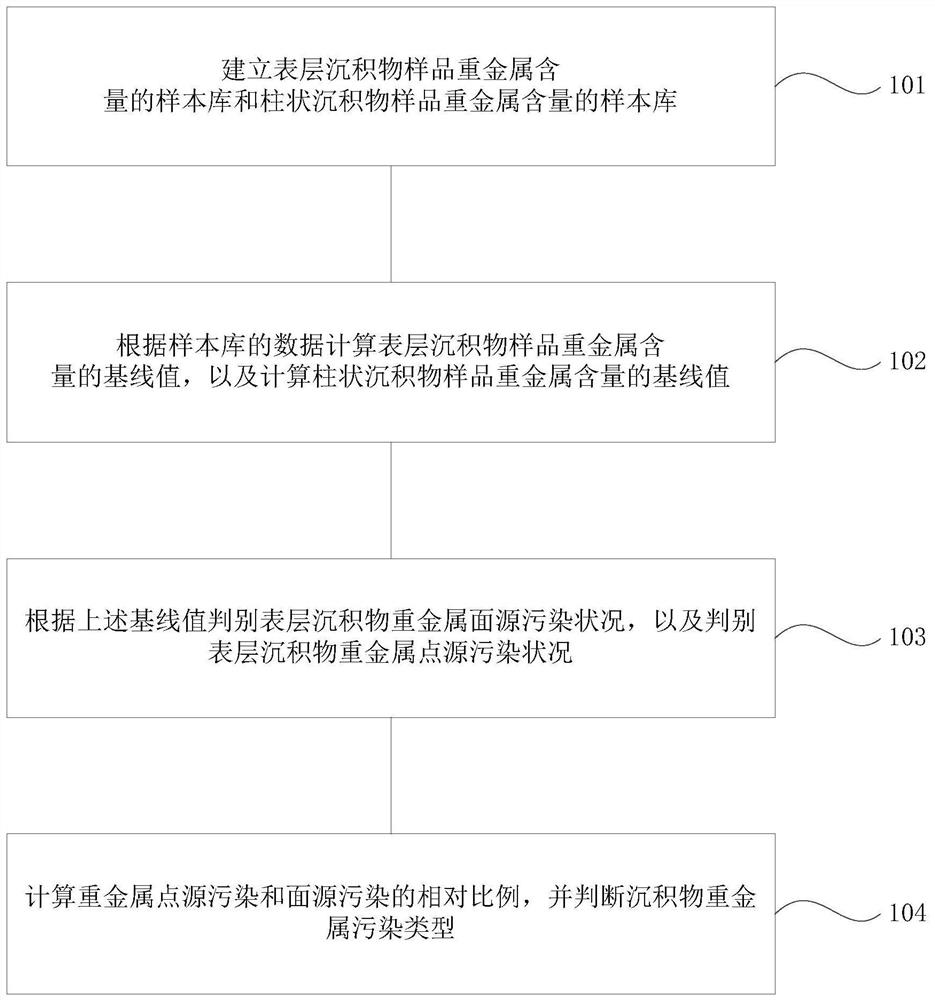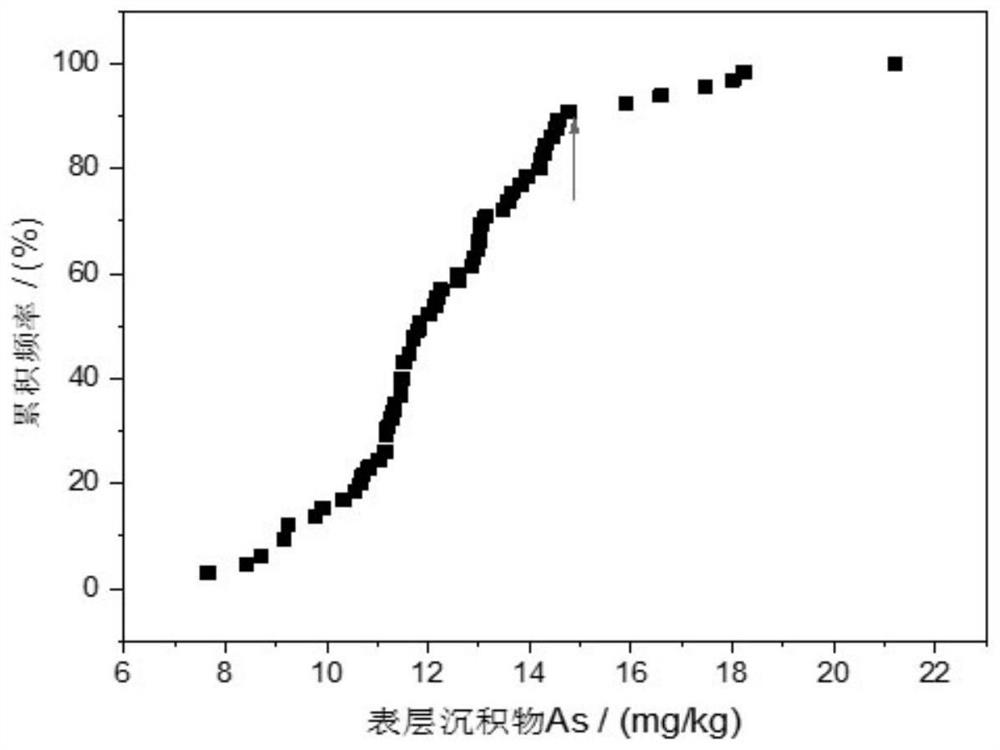A method for discriminating pollution types of heavy metal-polluted sediments in environmental protection dredging projects
An environmental dredging and heavy metal technology, which is applied in design optimization/simulation, special data processing applications, etc., can solve the problems of difficulty in obtaining the background value of heavy metals in sediments, inability to provide accurate and beneficial information, and inability to accurately distinguish the types of heavy metal pollution.
- Summary
- Abstract
- Description
- Claims
- Application Information
AI Technical Summary
Problems solved by technology
Method used
Image
Examples
Embodiment Construction
[0042]For further elaborating the technical means and effect that the present invention adopts for reaching the intended purpose of the invention, below in conjunction with accompanying drawing and preferred embodiment, to the method for discriminating heavy metal polluted sediment pollution type in a kind of environmental protection dredging project that proposes according to the present invention , its specific implementation, structure, features and effects are described in detail below. In the following description, different "one embodiment" or "embodiment" do not necessarily refer to the same embodiment. Furthermore, the particular features, structures, or characteristics of one or more embodiments may be combined in any suitable manner.
[0043] Such as figure 1 Shown, the method for discriminating heavy metal polluted sediment pollution type in a kind of environmental protection dredging project that the embodiment of the present invention proposes, it comprises the f...
PUM
 Login to View More
Login to View More Abstract
Description
Claims
Application Information
 Login to View More
Login to View More - R&D
- Intellectual Property
- Life Sciences
- Materials
- Tech Scout
- Unparalleled Data Quality
- Higher Quality Content
- 60% Fewer Hallucinations
Browse by: Latest US Patents, China's latest patents, Technical Efficacy Thesaurus, Application Domain, Technology Topic, Popular Technical Reports.
© 2025 PatSnap. All rights reserved.Legal|Privacy policy|Modern Slavery Act Transparency Statement|Sitemap|About US| Contact US: help@patsnap.com



